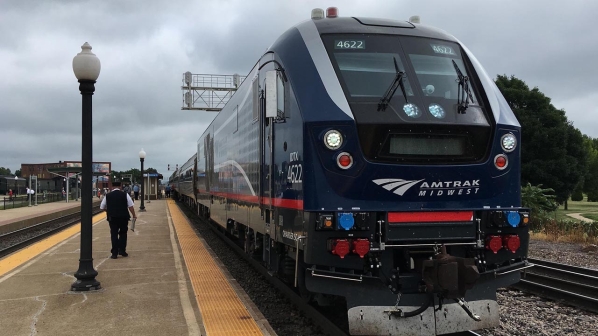The Quad Cities have built a station for the service, and the State of Illinois has also committed to the project. In addition, the legislature has doubled the state’s fuel tax, creating a new dedicated fund for transit projects in the state.
“This effectively restores the power of the tax that had been lost to inflation since it was last adjusted nearly 30 years ago,” the Midwest High Speed Rail Association (MHSRA) said in a statement. “It’s worth noting that transit fares have roughly doubled over the same period. And, the tax will now be indexed to rise with inflation every year.”
The fuel tax currently goes into a fund that pays for transport projects around the state, such as the annual costs of operating Amtrak trains. The new dedicated fund for transit upgrades aims to create a “steady, reliable funding stream that can be used for Metra upgrades needed to lay the foundation for high-speed service around the Midwest.”
Illinois has also committed $US 100m for track upgrades to CN lines between Chicago and Carbondale, which should address slow speeds and frequent delays on this line.
In addition, there is a further $US 400m will support Create rail projects in Chicago, such as the massive 75th Street project on Chicago’s South Side, which will unclog a number of lines used by Amtrak and Metra trains. The package also includes $US 50m in new, dedicated funding for biking and walking projects.
In addition, the bill includes a provision to enable the state to cooperate with a private developer to to build a new Amtrak/Metra/CTA megastation in Chicago’s South Loop as part of a vision called One Central. “This project is still in a conceptual stage, but could serve as a temporary terminal for high-speed trains before CrossRail Chicago is completed,” MHRSA says.
“This legislation addresses the backlog of smaller, individual projects. Now it’s time to look forward and think big. With an improved, reliable funding stream in place, the next step is for Illinois to craft a bold, state-wide vision for passenger rail and coordinate a similar vision for the entire Midwest.
“There are sections of new, high-speed track - and upgrades to existing track - that can serve multiple routes and create benefits that are much more than the sum of their parts. But before we can identify those projects, we need a plan with a vision for a robust network of trains.”

